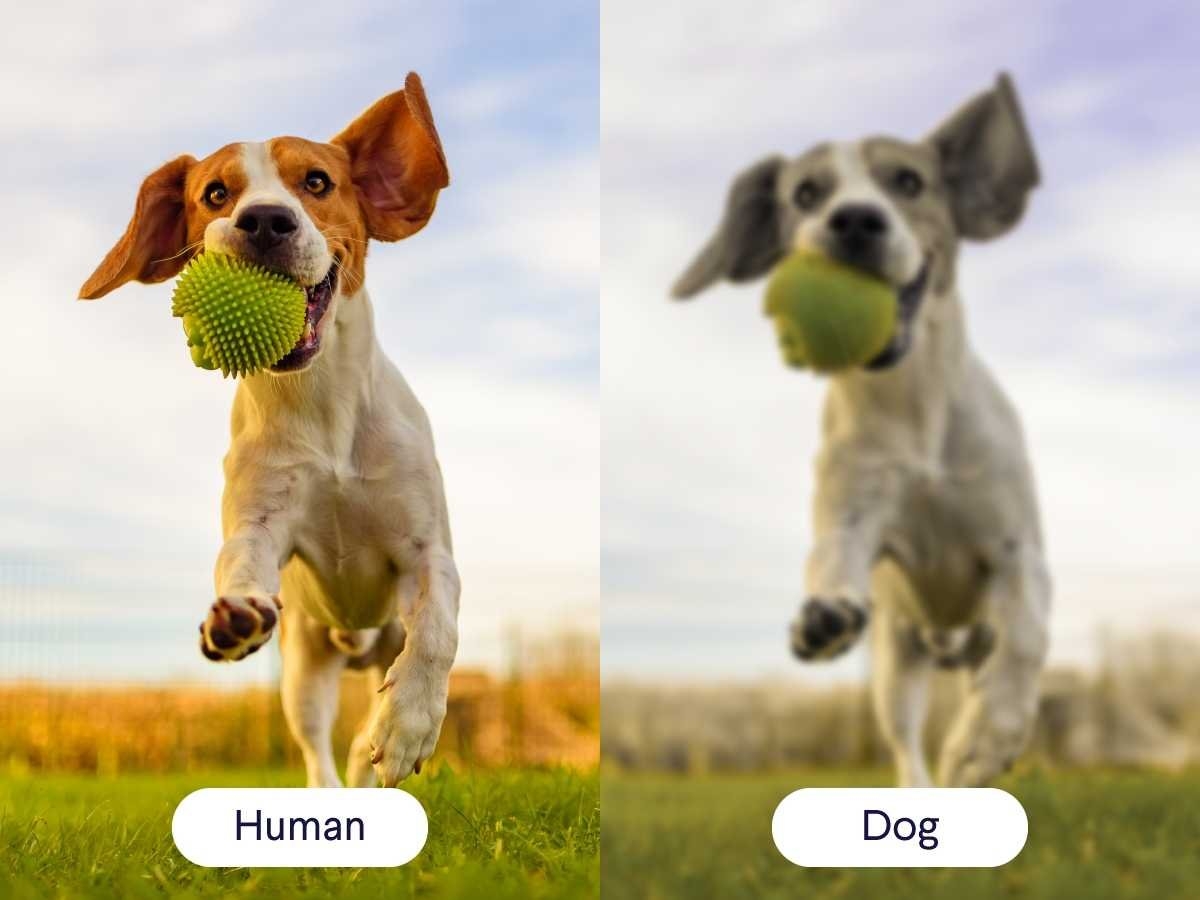Dogs have long been known to see the world differently than humans do. While we perceive a wide spectrum of colors, dogs have a more limited color vision. Understanding how dogs see color can help us better understand their perspective on the world around them.
It is a common misconception that dogs see the world in black and white. While they do not see as many colors as humans do, dogs are not completely colorblind. Their vision is similar to that of a person who is red-green colorblind, with the ability to see shades of blue and yellow.
Color Vision in Dogs
Research has shown that dogs have two types of color-detecting cells in their eyes, called cones. Humans have three types of cones, allowing us to see a wide range of colors. Dogs, on the other hand, have only two types of cones, making their color vision more limited.
While dogs can see shades of blue and yellow, they have difficulty distinguishing between red and green. This means that a red ball on green grass may appear as a similar shade to a dog, making it harder for them to spot the ball. However, objects in shades of blue and yellow will stand out more to a dog.
Despite their limited color vision, dogs have other ways of perceiving the world around them. Their sense of smell is much stronger than humans, allowing them to rely more on scent than sight. Dogs also have a wider field of view than humans, giving them a better sense of their surroundings.
While dogs may not see the world in the same vibrant colors that humans do, their unique vision allows them to navigate their environment in different ways. Understanding how dogs see color can help us better understand and appreciate our furry companions.
In conclusion, while dogs may not see the world in the same colorful spectrum that humans do, they still have the ability to perceive shades of blue and yellow. Their unique vision, combined with their other senses, allows them to navigate and interact with their environment in their own special way.
